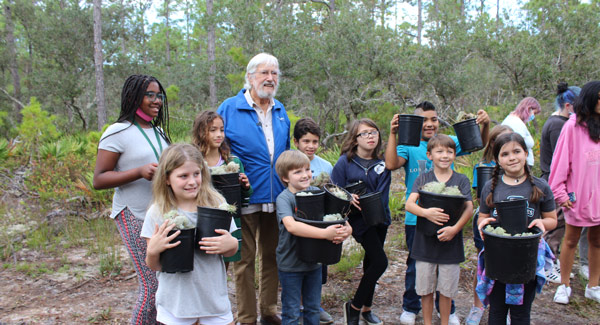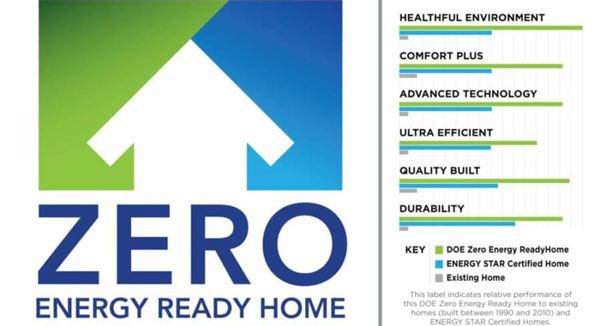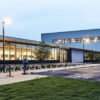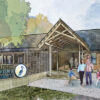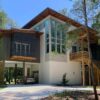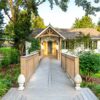The Living Building Challenge (LBC) was created by the International Living Future Institute (ILFI) to inspire and certify buildings that go beyond sustainability, and are restorative in design.
The Living Building Challenge leapfrogs the incremental improvements above code required by Energy Star, LEED, and other rating systems and aims to create the “greenest buildings anywhere…serving as role models for those that follow." In other words, it replaces a focus on reducing our negative environmental impacts by challenging us to imagine “what good looks like.”
The Living Building Challenge helps to create Living Buildings that are:
- Regenerative spaces that connect occupants to light, air, food, nature, and community.
- Self-sufficient and remain within the resource limits of their site. Living Buildings produce more energy than they use and collect and treat all water on site.
- Healthy and beautiful.
The Challenge is organized around 5 “Petals”, or categories of requirements, such as Place, Water, Energy, and Materials. Each Petal includes one or more “Imperatives,” for a total of 20 mandatory requirements. Certification is only awarded after a year long performance period, proving that all imperatives have been achieved.
When the LBC was first introduced in 2006, it was met with much excitement, and some skepticism. Many in the design community did not believe that a Living Building was even possible. A network of Living Building Ambassadors was established to help educate building owners and the design community.
WATERSHED’s Rebecca Dunn Bryant was the first Living Building Ambassador in Alabama, working with the US Green Building Council, the Nature Conservancy, the Alabama Coastal Foundation and others to deepen the conversation around sustainability in our state.
After a slow start during the great recession, the Living Building Challenge has proven to be not only achievable but scalable. As of the spring of 2023, over 250 buildings have received a Living Building Certification, and over 500 more are pursuing certification.
Gulf State Park’s Interpretive Center is the first building in Alabama to pursue the Living Building Challenge, and has received the honor of being Alabama’s first Living Building, achieving Petal Certification with 19 of the 20 imperatives of the Living Building Challenge!
Hundreds of projects around the world are working towards certification, and the numbers show that it is still the pinnacle of green building achievement. According to Amanda Sturgeon, FAIA, executive director at ILFI, “We have shown that it’s possible; now we need to show that it’s scalable,”
To that end, the Living Building Challenge continues to evolve, with LBC version 4.0 introduced in 2019. Additionally, buildings can be certified for achieving Zero Carbon, Zero Energy, CORE Green Building Certification, or Living Petal Certification. LBC 4.0 and the expanded range of certification options reflect two primary goals: to simplify the program so the level of effort of teams is better aligned with their impacts, at both project and market scales, and to fill the gap between the highest levels of mainstream green building certifications and the entry point to the Living Building Challenge.
“The past decade has seen relatively small progress toward addressing global climate change. We are reaching a point where the next decade will see change to our ecosystem health, fresh water supplies and climates at unprecedented levels.”
“Nothing less than a sea change in building, infrastructure and community design is required. Indeed, this focus needs to be the great work of our generation. We must remake our cities, towns, neighborhoods, homes and offices, and all the spaces and infrastructure in between. This is part of the necessary process of reinventing our relationship with the natural world and each other—reestablishing ourselves as not separate from, but part of nature, because the living environment is what really sustains us.”
“This standard is an act of optimism and belief that with the right tools in the hands of passionate, literate, and sensitive individuals, a revolutionary transformation is possible. It is a program that asks us to think holistically and to engage both our right and left brains, head and heart.” (Source: International Living Future Institute)
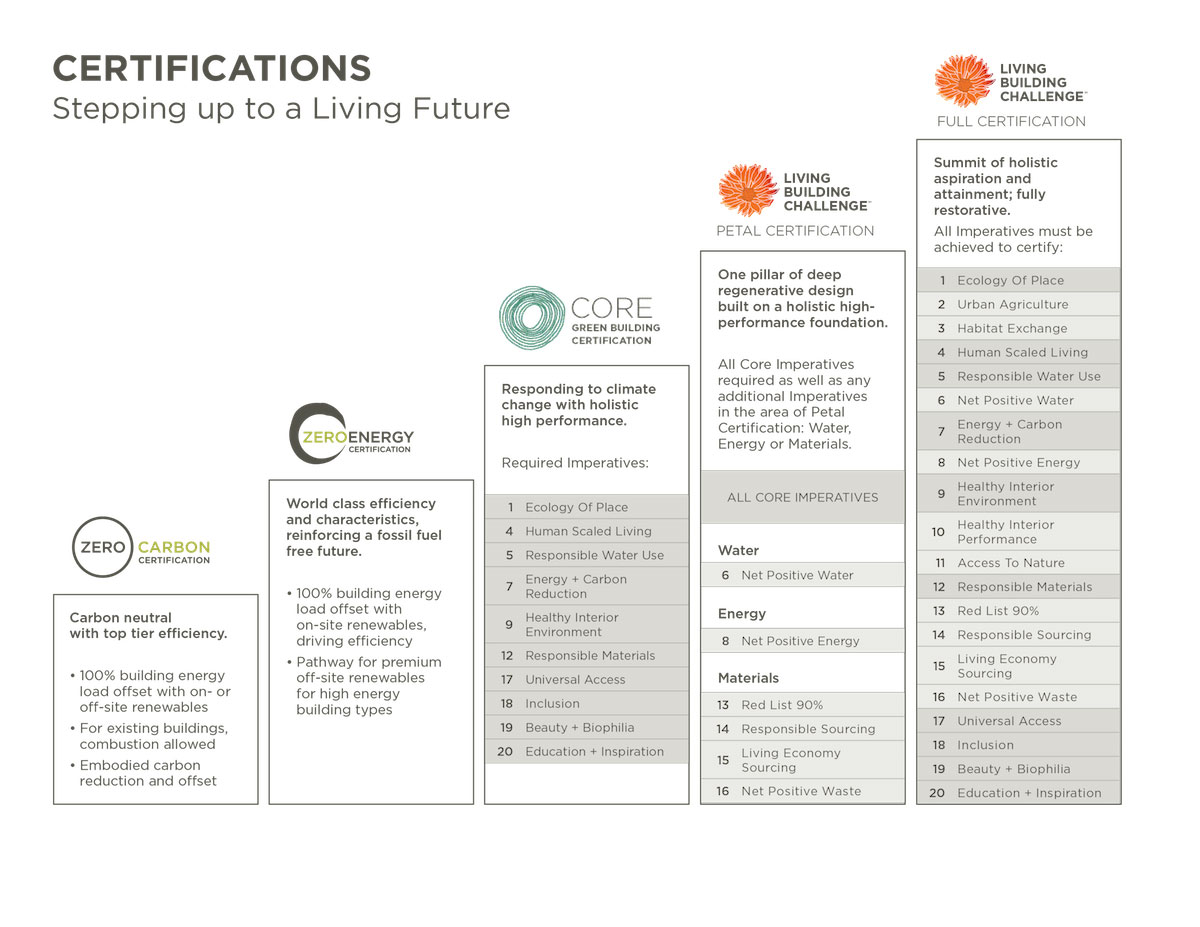 This diagram shows all the International Living Future Institute certifications, including the new Core standard, which now forms the basis of both Petal and Living certification.
This diagram shows all the International Living Future Institute certifications, including the new Core standard, which now forms the basis of both Petal and Living certification.
Image: International Living Future Institute


